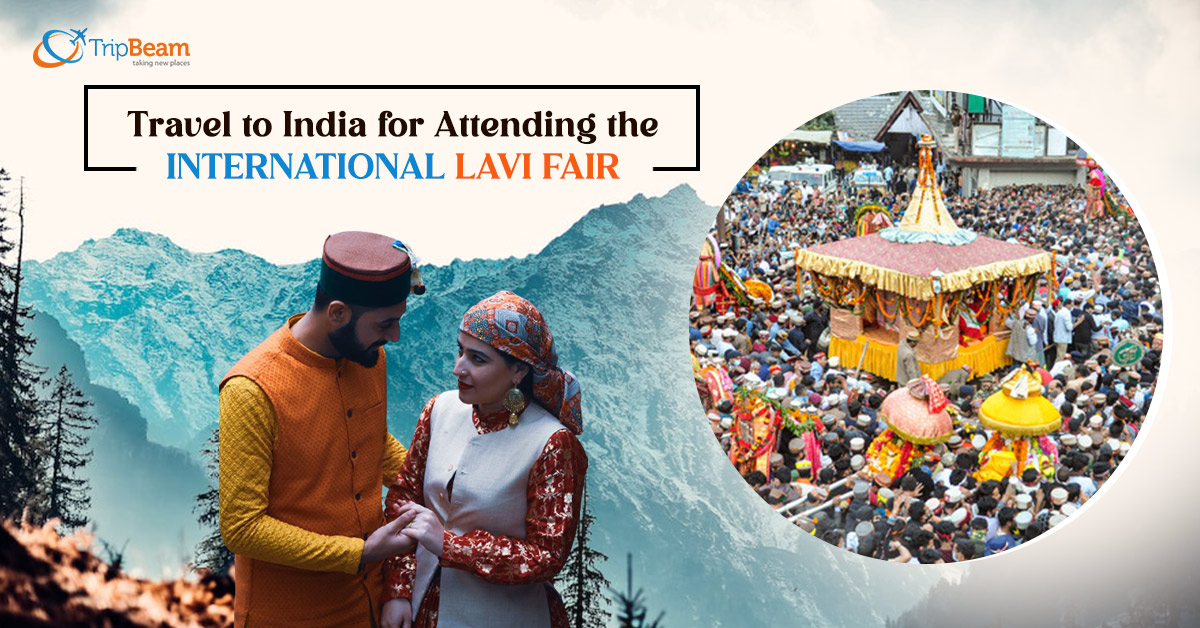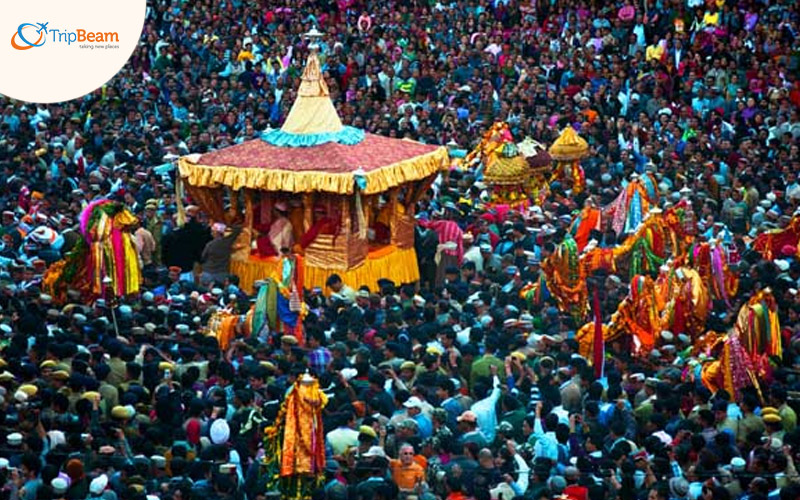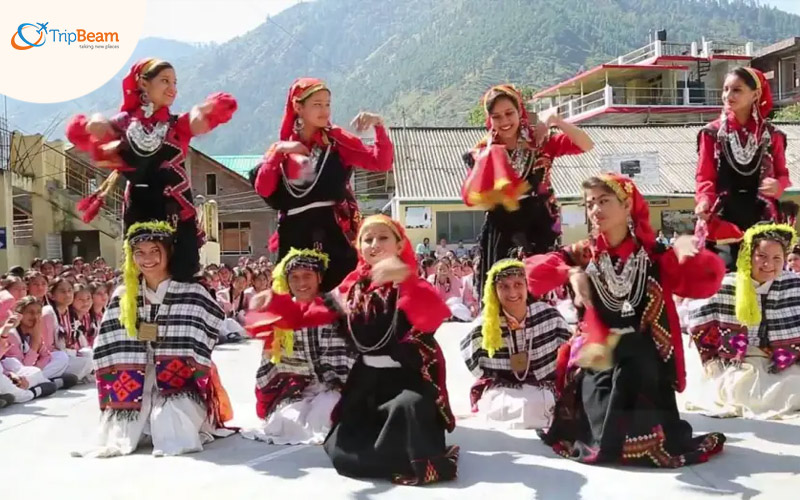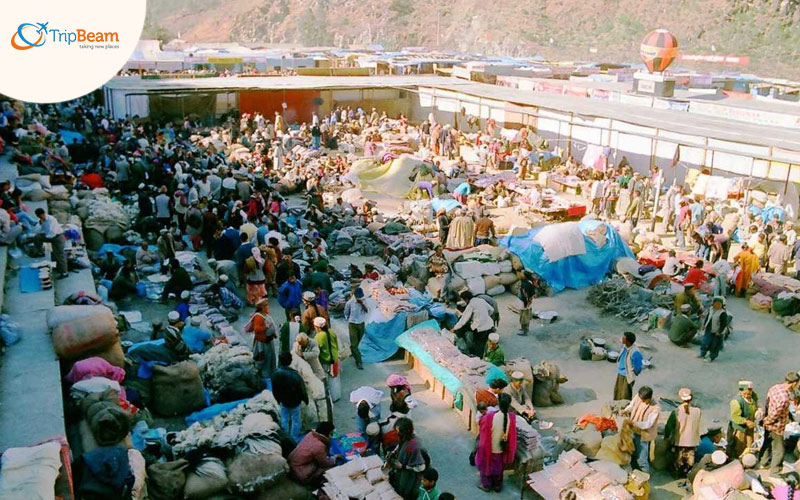
Heritage consists of still-existing tangible and immaterial components. People consider intangible cultural heritage to include traditions, rituals, and knowledge that people still practice in some way. Individuals have adopted this way of life for many years. Customs and rituals express the beliefs of the local community. Tripbeam brings you this article as a modest attempt to chronicle an important, historically significant commercial and cultural Lavi fair attended by people from the high Himalayan region and abroad in the Indian state of Himachal Pradesh. Globally renowned, India’s culture and traditions thrive, as its people remain rooted even in the 21st century.
Fairs and festivals are one way by which people can maintain their cultural legacy as they get an opportunity of dancing to traditional music and perform traditional acts on stage at these special events. Through these noteworthy events, festivals, and fairs a community’s cultural heritage is promoted, protected, and maintained and this is a reason that over the years the aviation industry has seen many bookings of flight tickets to India by people residing in the States. Tripbeam has brought yet another fair to delight the readers and the customers and this fair is your next and best reason to travel to India.
More on Rampur Bushahr
Rampur Bushahr, a municipal body in the Shimla area, conducts the distinctive event known as Lavi Fair. Rampur Bushehr, a large township on the Sutlej River’s banks, serves as the entry point to Kinnaur and Spiti. Bushehr and Tibet signed a pact, establishing Lavi Fair as a trading outpost in its initial stages. Both small and large-scale businesspeople attend it annually from November 11 to November 14, primarily to promote trade among the residents and shepherds. Locally celebrate the day to mark the signing of the Mutual Trade Treaty between Rampur Bushahr and Tibet.
Observers can witness the trading of traditional commodities like wool, horses, mules, yaks, and dried fruits at the banks of the captivating River Sutlej during the Lavi Fair. It is an exciting experience to be at the foothills of the Himalayas by grabbing cheap travel offers packages in November where these products are either sold or bartered. Lavi Fair, also known as the International Lavi Trade Fair, has been a tradition in the area for more than three centuries. It is regarded as Himachal Pradesh’s legacy. This fair commemorates Shimla’s rich cultural, social, and economic heritage, and, therefore, people regard it as having great aesthetic value. People engage in this event with tremendous fervor as it is an international fair.
-
Tradition

Since the fair’s inception, Rampur residents have been adhering to a tradition. Since the region considers the River Satluj holy, people pay their respects to the river before commencing trade. People firmly believe that this behavior will bring luck to the fair’s traders. Before the event starts, several other customs are observed which will be a treat for the eyes of overseas travelers and make their last minute flights to India worthwhile.
-
Preparations

Earlier in history, the monarchs and members of the royal family were in charge of organizing this fair whereas today. The local municipality is in charge of planning it each year. There is a long lead time for preparations. The Fair Ground is embellished. Set up includes staging, lighting, and stalls. The fair starts with customary rites.
-
Activities

Goods Stalls:
- Many different stalls have set up, offering a variety of goods for sale. Woolen goods abound at these stalls. You must look for the woolens created from the state’s famed and premium “Pashmina wool,” which is a specialty. Additionally, the quality of blankets and quilts sold here will amaze you. After flying on flight tickets to India, you can buy traditional clothing such as shawls, pattus, hats, and coats as souvenirs.
- People from the upper regions of Himachal often bring dry fruits like walnuts, chilgoza, apricots, and almonds in addition to textiles and handicrafts. For trading, they bring potatoes and kidney beans. Furthermore, traders offer a diverse range of jewelry, especially for the stalls encircled by idols, religious paintings, and Tibetan and Buddhist-style metal jewelry.
- This fair sells handlooms and handicrafts among other items, such as traditional musical instruments, utensils, mats, etc.
- The horse of Chamurthi: The Chamurthi Horse, often known as “the ship of the frigid desert,” or “Spiti pony” is the star attraction among the cattle that the tribal people bring to the fair. This animal is a native of the Tibetan Plateau. It is exclusively present in India’s villages that border China.
- Dance and Musical Nights: In the evening, dancing and music acts will entertain overseas travelers. It promotes local folk art through traditional dance and music performances. A vibrant stage awaits travelers, where they can join in the amusement like other audiences. Learn a few steps of the folk dance ‘nati. We invite nationally renowned vocalists to perform alongside local performers.
- Exhibition by government and various organizations: The state’s government ministries like Education, Fisheries, Pollution Board, Agriculture, Horticulture, Tourism, Electricity, Indian Post, and Women and Child Development showcase their products, programs, and awareness efforts at the event. Additionally, organizations such as the Red Cross, Bhuttico, and banks use booths to communicate their messages to the event’s attendees.
One of the biggest trade fairs in northern India, the four-day Lavi fair boasts a staggering amount of commerce. The Lavi fair is the ideal venue for showcasing Indian culture and trade in front of travelers and international businesspeople who have traveled by booking flight tickets to India.
Fervor and vitality continue to mark the annual Lavi Fair, providing evidence of a rich social, cultural, and economic history. This fair makes it easier to preserve the legacy that still exists in its current form. Local tribal people have a fantastic opportunity to engage, sell, purchase, and enjoy themselves through it with overseas businessmen. Although there aren’t many historical records of the fair, it still embodies a wonderful living tradition that we should treasure.

